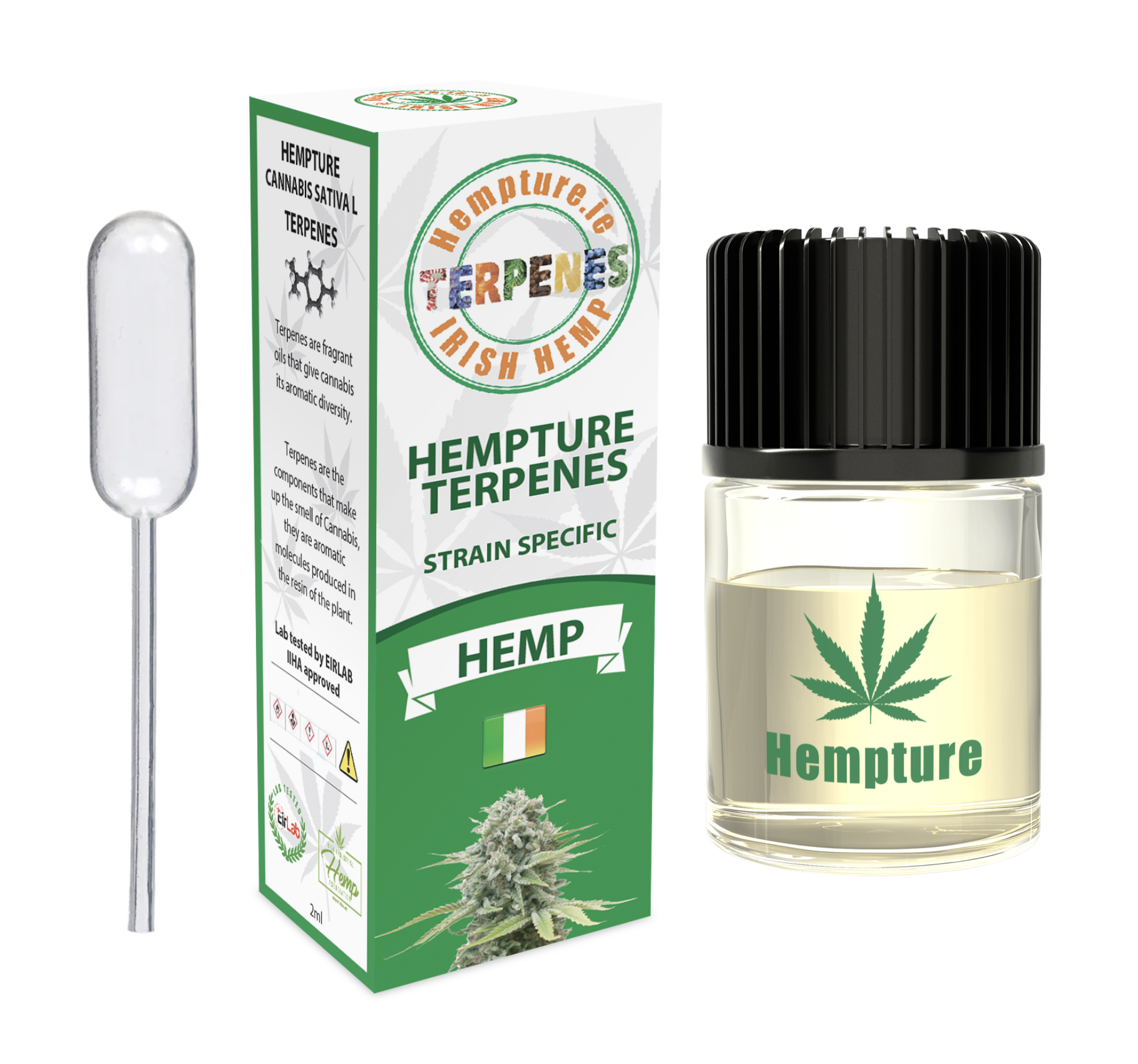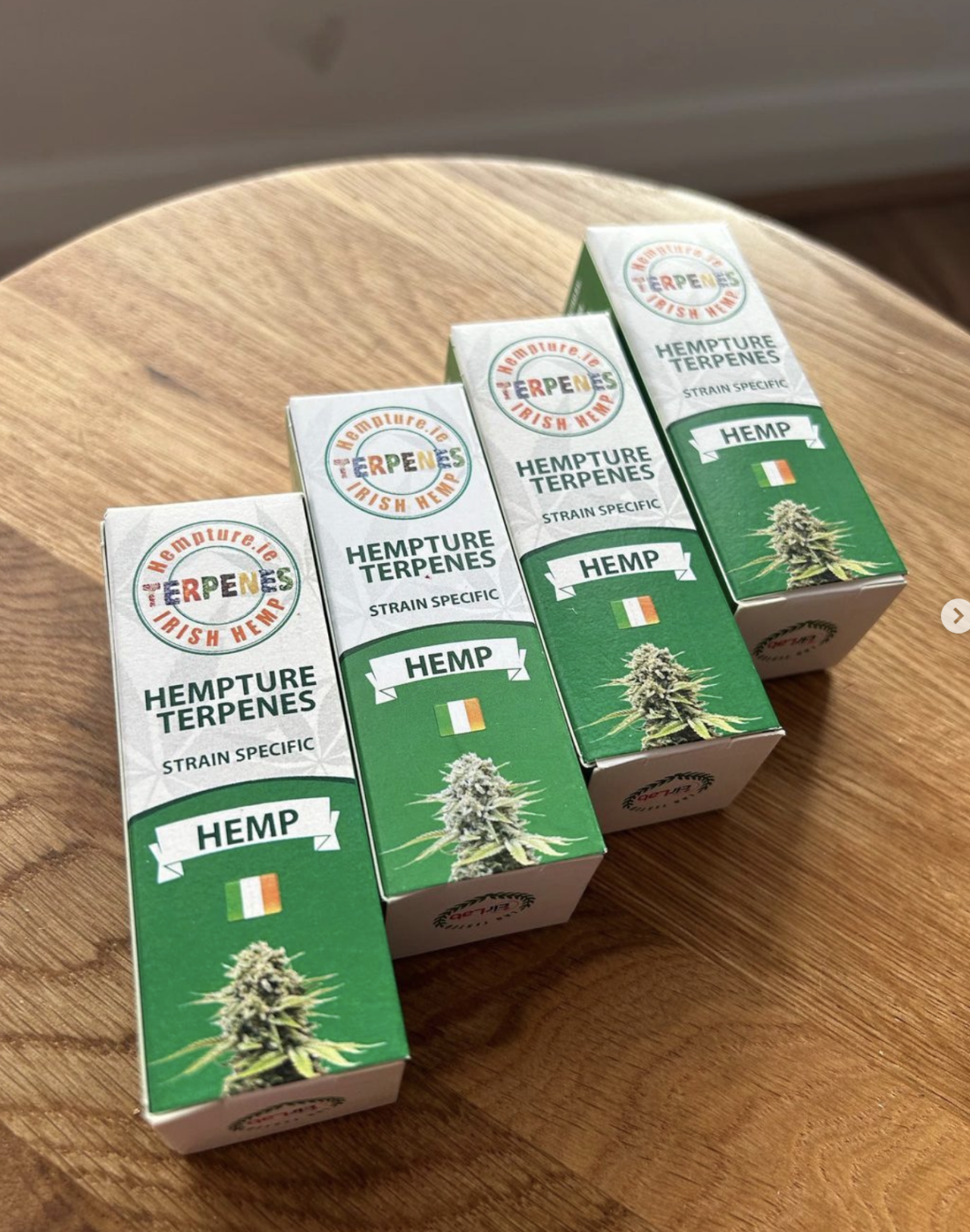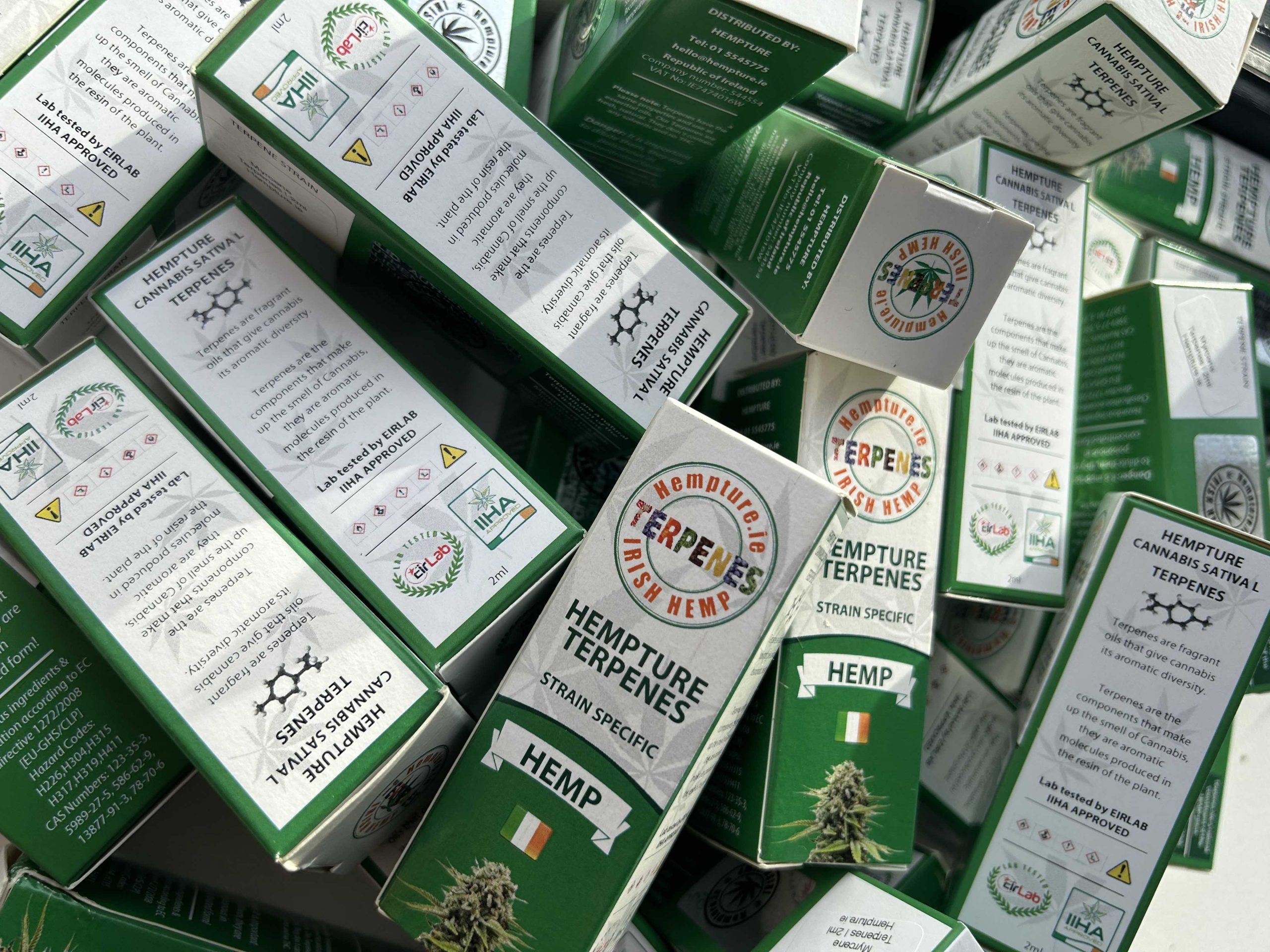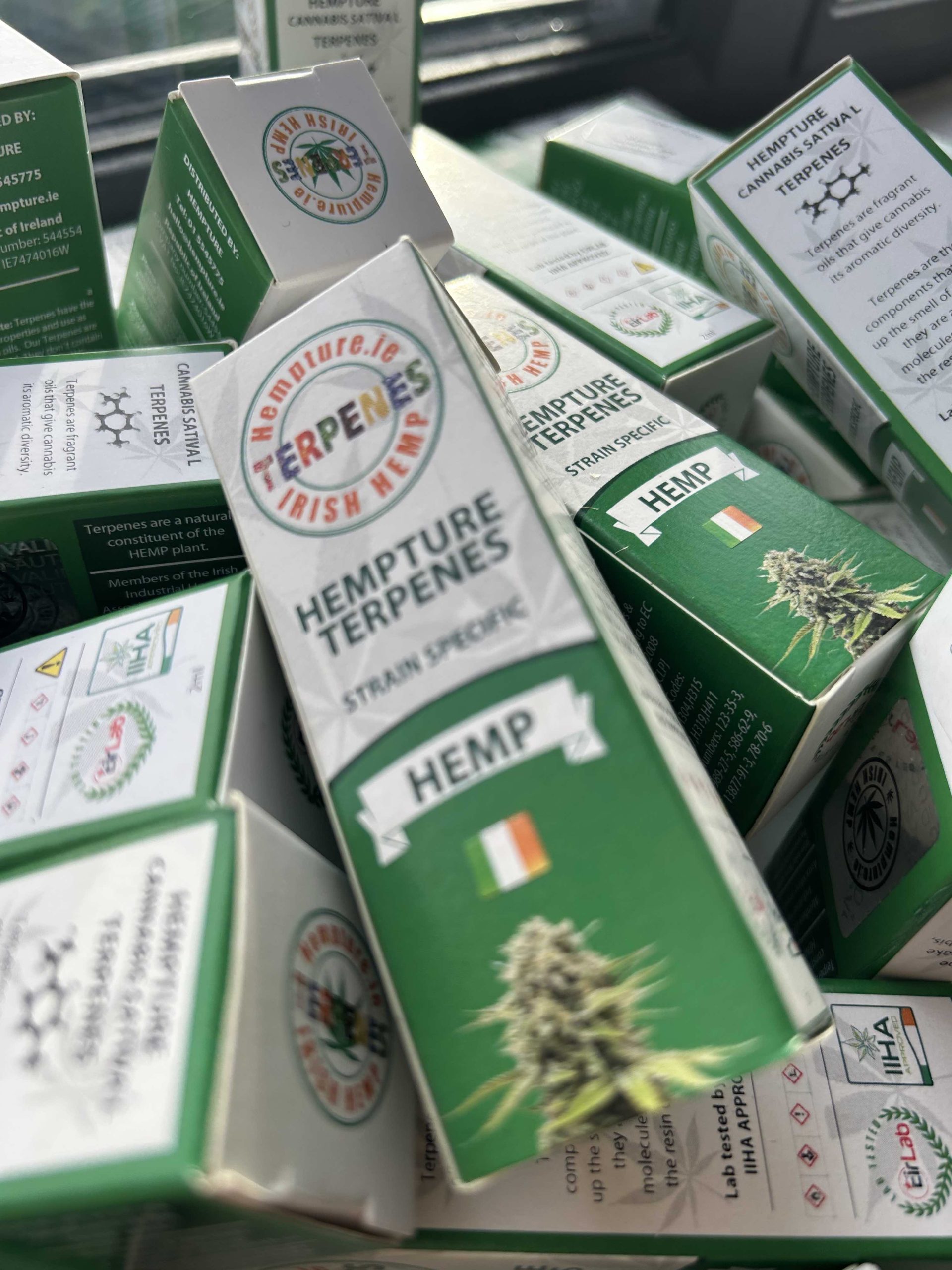Beta Pinene Terpenes
Our isolated Cannabis Terpenes are completely raw and undiluted, they can be used individually in your product to harness each terpene’s unique effect or combined in different terpenes.
In nature terpenes do not occur in isolation. Individual plants produce a variety of types of these molecules that come together to form what is called a terpene profile. Research has revealed that terpenes possess significant wellness properties.
Terpenes/terpenoids have a wide range of biological and pharmacological activities, for instance, antifungal, antiviral, anticancer, anti-inflammatory, antihyperglycemic, antiparasitic, antioxidant, and antimicrobial.
Just like a-pinene, Beta-pinene has been shown to have profound and scientifically proven effects on overall health. Beta-pinene has been shown by researchers to be an effective anti-inflammatory, a bronchodilator, pain reliever, anxiety-reliever, and even a tool to battle short-term memory impairment. While there are some slight differences between the two, both positively affect our overall health.
Beta-pinene (β-pinene) is one of the two isomers of pinene, along with its sibling alpha-pinene (α-pinene). β-pinene is most known for it’s a woody and piney smell. It is one of the main compounds released by forest trees.1
Beta pinene molecule Pinene is one of the most common terpenes in the plant world and is produced in significant quantities by basil, cedar, pine, and conifer trees, dill, eucalyptus, oranges, parsley, rosemary, and hundreds of other plants, including of course cannabis.
Because both β and α-pinene share the same plant sources, they also share similar therapeutic qualities and characteristics. The main differentiator between these two terpenes is their smell. Whereas α-pinene possesses the unmistakable fresh and earthy scent (think pine and rosemary), β-pinene has a fresh, woody, and spicy aromatic quality (think dill, parsley, basil or hops).
Research shows that Beta pinene can enter the brain following inhalation, oral and intraperitoneal administration methods. It exerts effects on multiple signalling pathways, including GABAergic, cholinergic, dopaminergic, serotoninergic, adrenergic, noradrenergic neurotransmitter systems, in multiple regions of the brain (e.g., hippocampus, frontal cortex, striatum, midbrain). Although limited, evidence suggests that pinene is anti-inflammatory and prevents oxidative stress, possesses anti-depressant, anxiolytic and anti-seizure properties, confers neuroprotection in models of stroke and ischemia, improves cognition, and provides analgesia in inflammatory, migraine-associated, and neuropathic pain in pre-clinical rodent or in-vitro settings. Several studies have shown that pinene has similar or better efficacy compared to existing medications for some indications
Types of Pinene
Pinene may be the most abundant terpene globally, but that’s partially due to its structural varieties–alpha-pinene and beta-pinene. The two have slight anatomical differences, but the main distinction is alpha-pinene is water-soluble while beta-pinene is not.
- Alpha-Pinene (α-pinene)
Alpha-pinene also referred to as simply “pinene,” is the compound responsible for the iconic smell of pine needles, as well as herbs like rosemary. This variation is more common in cannabis and clinical research.
- Beta-Pinene (β-pinene)
Beta-pinene has a slightly different pine scent, which is responsible for the aromas of herbs like dill, basil, parsley, and hops. This variation is less common in cannabis and less researched, although preliminary studies show beta-pinene may have similar benefits and properties to alpha-pinene.
Pinene Research
The benefits of pinene are far-reaching. A 2019 review concluded the benefits of alpha and beta-pinene included antimicrobial, anti-inflammatory, anti-tumor, antioxidant, gastroprotective, and neuroprotective properties.
- Pinene acts as a bronchodilator, relaxing muscles in the lungs and widening the airways to increase lung capacity. Pinene is so potent that simply being in a pine forest allows you to breathe better.
- A 2011 study found that alpha and beta-pinene worked well against Anti-infectious Bronchitis Virus or IBV. IBV is a family of viruses that affect your lungs, including different types of coronaviruses.
- Alpha and Beta-Pinene have antioxidant properties. The presence of pinene increases cell viability and reduces cell death.
- Alpha-Pinene has anti-cancer properties and can shrink tumor sizes by significantly decreasing cancer cell reproduction.
- A study done in 2011 found that pinene has anti-inflammatory properties in low levels, while in higher doses, it works like a broad-spectrum antibiotic.
Reported Pinene Benefits
- Anti-inflammatory properties: A 2012 study examined alpha-pinene’s effect on acute pancreatitis. Scientists found that pinene can improve pancreatitis symptoms by bolstering immune support, reducing organ inflammation, and preserving long-term organ function.
- Antibiotic properties: A 2015 study looked at α-Pinene’s ability to fight the bacteria Campylobacter jejuni, a common cause of food poisoning. They found pinene increases your natural antibiotic resistance while destroying the cells of the bacteria.
- Increases Lung Capacity: Pinene works as a bronchodilator to widen airways and relax lung muscles. Increased lung capacity delivers more oxygen to your brain, increasing energy and focus levels and regulating your nervous system’s stress response.
- Neuroprotective properties: Pinene increases sleep quality and protects brain cells against oxidative damage. Poor sleep quality and prolonged oxidative stress contribute to early signs of aging and health problems, like heart attacks and strokes.
- Reduces Tumors: A 2015 study found that pinene reduced liver cancer cell growth by up to 69%.
Full details: Beta Pinene MSDS (PDF)
View: Cannabinoid and Terpenes Guide
Package contains: 2ml Glass Vial of Terpenes






